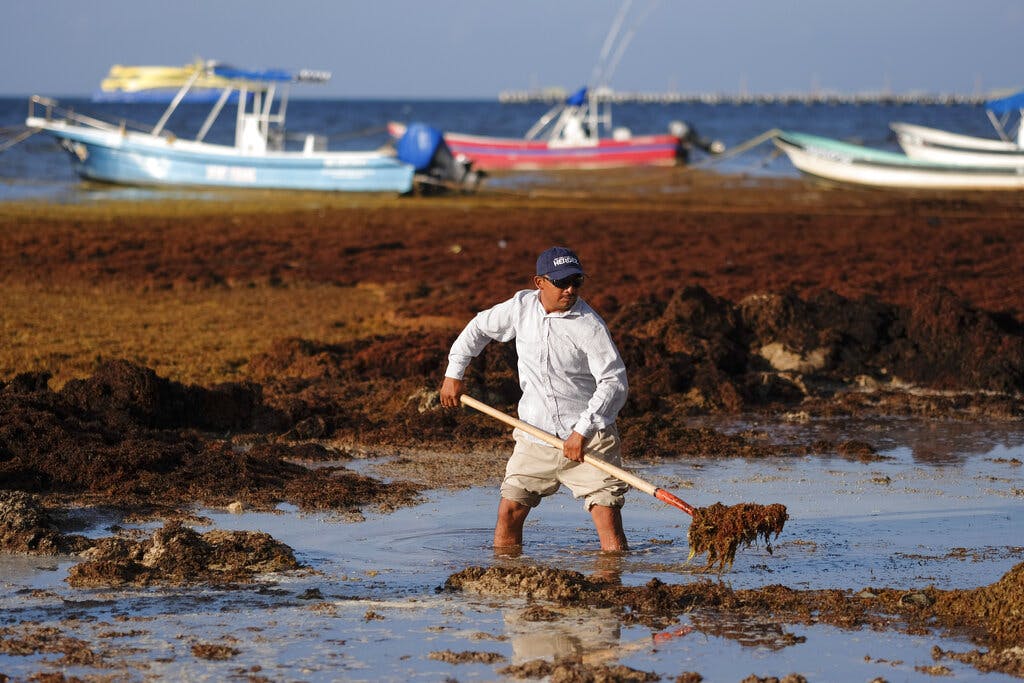Record-Breaking Blob of Seaweed Expected To Bury Beaches in Florida, Gulf of Mexico This Spring
When the seaweed lands on Western Atlantic beaches later this spring and summer, it will emit a foul — and potentially dangerous — odor that will make beachgoing more of a hassle than a holiday.

Massive blobs of seaweed are starting to wash up on Florida’s shores, and it’s only the beginning.
The clumps are part of a 5,000-mile wave of sargassum seaweed now making its way to the West Atlantic, the Gulf of Mexico, and the Caribbean from West Africa. Officials expect the worst waves of the noxious weed to start showing up on Florida’s beaches sometime in July.
When the seaweed lands on beaches, it emits a foul — and potentially dangerous — odor. Decomposing sargassum releases hydrogen sulfide gas, also known as “sewer gas,” which smells something like rotting eggs.
The gas is an irritant and can hamper breathing for asthmatics on the beaches and nearby. Florida’s Department of Health is recommending that those with respiratory issues avoid the beach and nearby dwellers keep their windows closed.
The sargassum clumps tend to absorb wildlife as they drift across the ocean. Among the organisms that dwell in the masses, jellyfish are prone to end up on the beach in large entanglements, which have led to stinging incidents.
The sargassum clumps can also contain toxic levels of arsenic, according to a local Florida paper, the Treasure Coast Palm. The Department of Health is advising Florida beachgoers to closely supervise children playing at the beach.
The massive amounts of sargassum can force the closure of tourist beaches and cost local governments millions of dollars. According to CNN, the island nation of Barbados has been using more than 1,600 dump trucks daily to clean its beaches.
A 2020 study estimated that a severe sargassum year could cause economic devastation to the tune of $20 million in the Florida Keys alone.
In 2021, scientists measured more than 22 million metric tons worth of the seaweed in the ocean — a record that this year could be shattered, according to Scientific American. Sargassum growth has accelerated over the past decade, and researchers are trying to figure out how and why.
In February of this year alone, according to Fox Weather, more than six million metric tons were measured in the ocean. Peak sargassum season isn’t until summer, but already beaches are finding themselves swamped in deposits.
An employee of the city of Fort Lauderdale who works on its beaches, Mark Almy, told NBC that his crews have already removed more than 500 yards of seaweed this year compared to 200 yards last year during the same time period.

